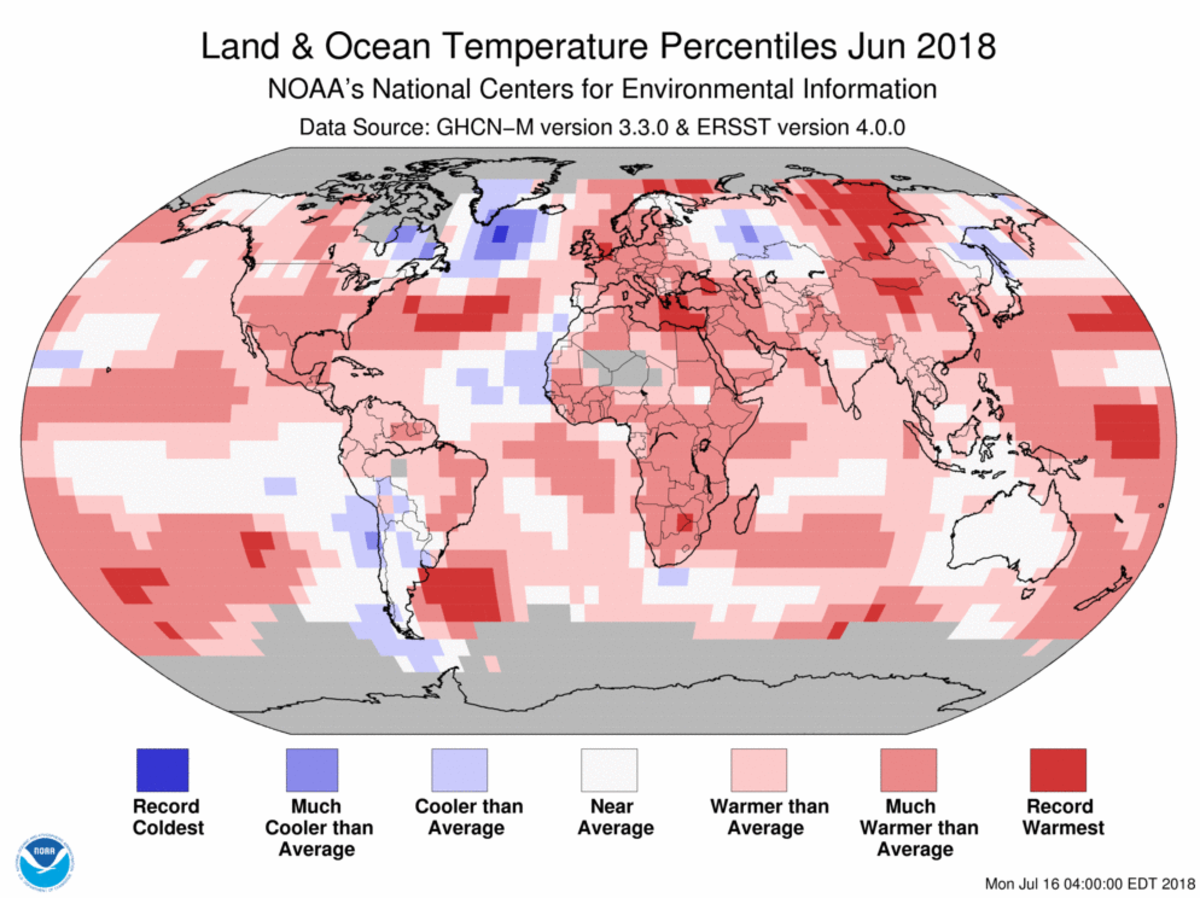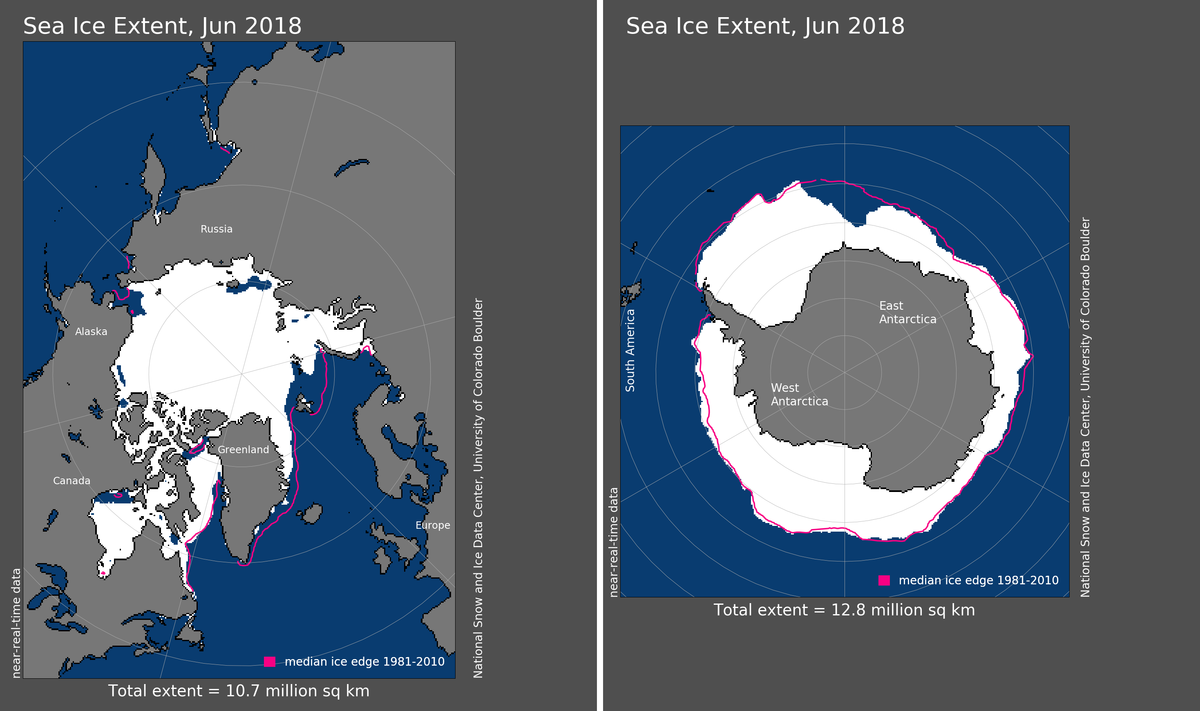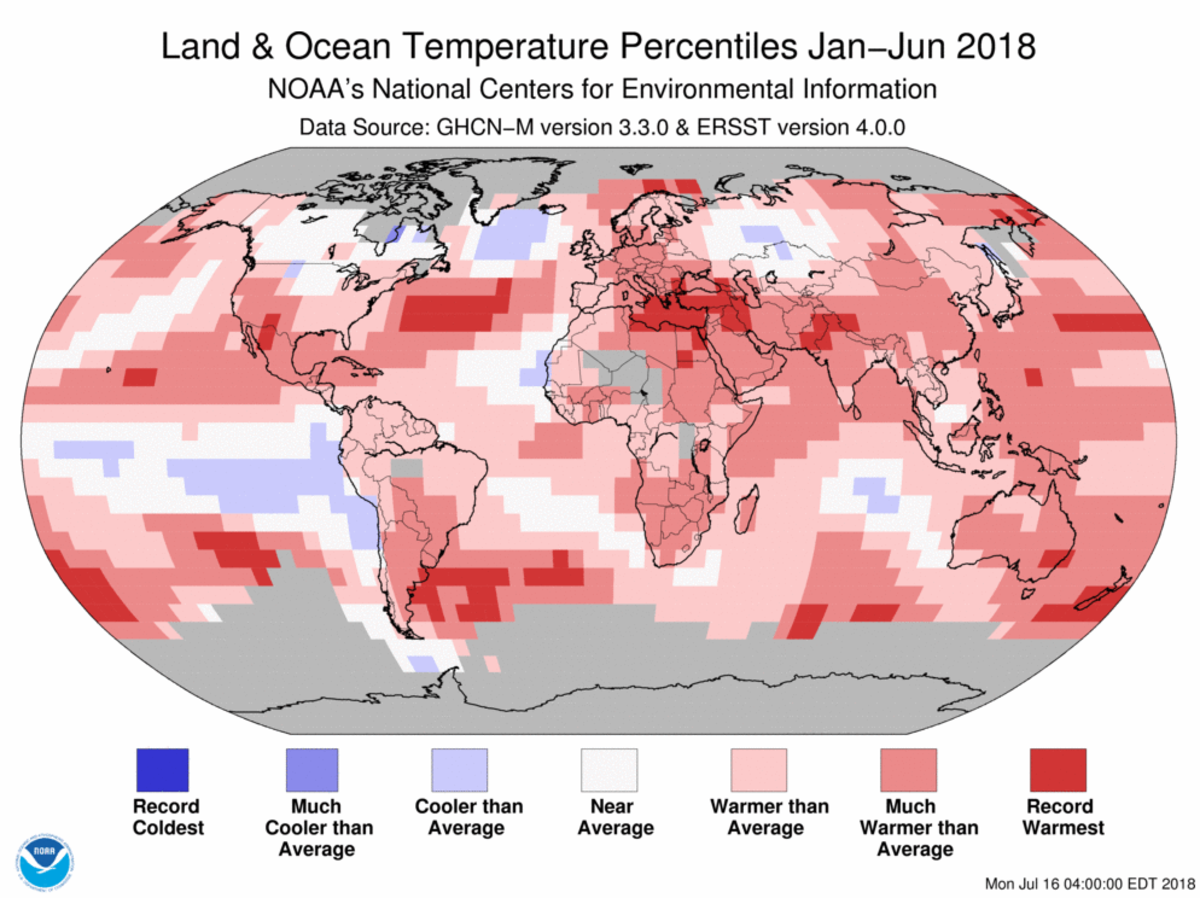The globe had its fifth highest June temperature on record

The global land and ocean temperature departure from average for June 2018 was the fifth highest for the month of June in the NOAA global temperature dataset record, which dates back to 1880. The year-to-date (January-June) global temperature was the fourth warmest such period on record.
This monthly summary, developed by scientists at NOAA's National Centers for Environmental Information, is part of the suite of climate services NOAA provides to government, business, academia and the public to support informed decision-making.
June 2018 Temperature
-
The June temperature across global land and ocean surfaces was 1.35°F above the 20th century average of 59.9°F, the fifth highest for June in the 1880-2018 record. The 10 warmest Junes on record have occurred since 2005, with 2016 the warmest June at 1.64°F above average. June 2018 also marks the 42nd consecutive June and the 402nd consecutive month with temperatures, at least nominally, above the 20th century average.
-
Record warm June temperatures were present across parts of central Asia as well as portions of the Atlantic, Pacific and Indian Oceans. The only area with record cold June temperatures was the northern Atlantic Ocean, off Greenland’s southern coast.
-
-
The globally averaged land surface temperature for June 2018 was 1.91°F above the 20th century average of 55.9°F. This value was the sixth highest June land temperature in the 139-year record.
-
Europe had its second warmest June since continental records began in 1910 at 3.24°F above average, trailing behind 2003 by 0.16°F. Several European countries had a June temperature that ranked among the six warmest Junes on record.
-
-
The June globally averaged sea surface temperature was 1.12°F above the 20th century monthly average of 61.5°F – also the sixth highest global ocean temperature for June in the record.
June 2018 Sea Ice
-
The June average Arctic sea ice extent was the fourth smallest in the 40-year record at 405,000 square miles (9.0 percent) below the 1981-2010 average, according to an analysis by the National Snow and Ice Data Center using data from NOAA and NASA. Below-average ice coverage was observed in the Chukchi, Barents, Laptev and East Siberian seas. Above-average ice was observed in eastern parts of Hudson Bay.
-
Antarctic sea ice extent during June was 190,000 square miles (3.8 percent) below the 1981-2010 average, the eighth smallest June extent on record. Antarctic sea ice expanded at a rate faster than average during June, and by the end of the month, the daily sea ice extent was near average. Most regions observed near-average ice coverage with below-average conditions in the northern Davis Sea.
Year-to-Date (January–June 2018)
-
The year-to-date temperature across global land and ocean surfaces was 1.39°F above the 20th century average of 56.3°F – the fourth highest for January-June in the 139-year record. The 2018 year-to-date value was 0.52°F lower than the record high set in 2016.
-
Record warm January-June temperatures were present across portions of the global oceans as well as parts of the Mediterranean Sea and surrounding areas. New Zealand, and small areas across North America, Asia and Australia also had record warm year-to-date temperatures. No land or ocean areas had record cold January-June temperatures.
-
-
The year-to-date globally averaged land surface temperature was 2.14°F above the 20th century average of 45.0°F. This value was the fifth highest for January-June in the record.
-
Europe, Africa and Oceania had a January-June temperature that ranked among the five highest such periods since continental records began in 1910.
-
-
The year-to-date globally averaged sea surface temperature was 1.08°F above the 20th century average of 60.9°F. This value was also the fifth highest for January-June in the 1880-2018 record.
For a more complete summary of climate conditions and events, see our June 2018 Global Climate Report.







